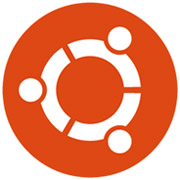
Canonical on Tuesday announced the release of Ubuntu 15.04, aka “Vivid Vervet,” as in East African monkey. It will be available for download on Thursday.
The new OS offers tools for cloud, device, client and Internet of Things development. The Ubuntu desktop release includes mostly maintenance and bug fixes, along with new integrated menus and dashboard usability improvements.
Ubuntu 15.04 for cloud and servers comes at a critical time to attract companies adopting cloud technologies. It brings a host of improvements and enhancements designed to help business users better deploy and manage successful cloud projects.
Ubuntu Core, dubbed “Snappy,” is the smallest Ubuntu OS available. It is designed for security and efficiency in devices or in the cloud. It is a lean, transactionally updated version of the Ubuntu OS designed to power drones, robots, network switches, mobile base stations, industrial gateways and IoT home hubs.
Ubuntu 15.04 also is the base for the Ubuntu phone currently shipping on the BQ Aquaris E4.5 and soon on the Meizu MX4. The latest 15.04 updates will be delivered over the air in coming weeks.
Canonical’s latest enterprise release coincides with growing adoption of OpenStack.
Enterprise IT departments are expected to increase spending on cloud computing this year. The cloud is the new platform to achieve elastically scalable, self-service computing, according to Gartner.
“The big thing that is new in Ubuntu 15.04 is the inclusion of Ubuntu Core,” said Jon Melamut, vice president for professional and engineering services at Canonical.
“This is the evolution of being a small, lightweight solution for devices that need high levels of maintainability to the use of the cloud state,” he told LinuxInsider.
Core Concept
The glue that binds the Ubuntu OS family together is not Ubuntu Core, however. It is the commonality of the Ubuntu ecosystem.
“What you will see over time is all of the products leverage the same technology with common attributes,” noted Melamut. “Over the last two-and-a-half to three years, we created a new way of presenting the maintenance of Ubuntu.”
It will not limit users of any flavor of Ubuntu on any device with partial updates. This is particularly important with the Ubuntu phone, he explained.
Snappy Send-Off
The release of Ubuntu 15.04 rings in a new way to deploy Linux, spawned by the Ubuntu phone’s OS. It is also an essential component of improvements made to cloud servers and IOT devices.
It breaks the very traditional way of using and deploying Ubuntu, based on its Debian roots, noted Dustin Kirkland, Ubuntu cloud solutions product manager and strategist at Canonical. That system involves Canonical’s Debian packages and vast repository of software.
“We have curated a lot of that software. We have adapted some of the best open source and created our own open source. In doing so, we created an operating system that is generally useful in the cloud, on physical servers, and on desktops and laptops,” Kirkland told LinuxInsider.
The modern evolution of technology, though, is demanding something a little bit different, which led Canonical’s development team to come up with Snappy, he added.
What It Is
Snappy packages apps securely for delivery to devices and cloud hosts. The new process isolates application data and guarantees that an update can be rolled back.
This first version of Ubuntu Core features secure app containment and Docker 1.5. It is available on major public clouds and for ARM and x86 devices on a range of popular boards for IoT. Ubuntu Core is already running on the next-generation of network switches, home routers, smart drones and robots.
Snappy’s Core Concept is well suited for updating and maintaning the Ubuntu phone. The phone’s ever-changing state of going into sleep mode and exchanging packets of information in small chunks over busy networks at changing intervals is not conducive to traditional methods of updating Ubuntu. The traditional approach of using apt-get just does not work on a phone, Kirkland pointed out.
“Two major technology shifts have occurred in the 10 years Canonical has been developing Ubuntu — cloud and IoT devices,” he said.
“In both cases, the industry is demanding something a bit different than the traditional way of installing and deploying packages. Canonical’s answer to that is Snappy,” said Kirkland. “Think of it as yet another flavor of Ubuntu.”
New Enterprise Tools
Ubuntu 15.04 for cloud and servers includes a prerelease version of the next scheduled release of OpenStack, dubbed “Kilo.” Ubuntu is the first OpenStack distribution to make the newest Kilo release available to users. Kilo becomes available on April 30 for non-Ubuntu users. Canonical will update its Kilo package upon final release.
Canonical packed a number of innovations into its Enterprise Ubuntu platform. One is an update to Neutron, OpenStack’s networking and IP Address management system. It now includes distributed virtual routing, or DVR. This enables Neutron to scale more efficiently using multiple nodes.
Also included with Ubuntu OpenStack is ZeroMQ, or 0MQ, a brokerless messaging system to eliminate bottlenecks in messaging as the cloud infrastructure scales. ZeroMQ is an intelligent transport layer for distributed applications.
Simplifying OpenStack Use
A third feature enhancement for cloud and servers is Keystone federation in Kilo’s integration into Ubuntu 15.04. Keystone allows shared identity across cloud regions, which will enable enterprises with multiple OpenStack implementations to manage identity much more efficiently. It simplifies the path to hybrid cloud computing with OpenStack on-premises and public clouds.
Key improvements and innovations in the Docker container components of Ubuntu 15.04:
- Live migration of LXC containers between hosts;
- Improved security model for containers through AppArmor profiles; and
- Docker updated to 1.5.
Ubuntu 15.04 OpenStack includes a new OpenStack Nova driver for LXD (next-generation hypervisor for containers). Nova-compute-LXD is an enhancement to Ubuntu OpenStack that lets end users deploy workloads on OpenStack into containers based on LXD. This brings the benefits of high performance and density, compared to KVM-based workloads, while maintaining the security isolation and flexibility offered by traditional virtual machines.





















































